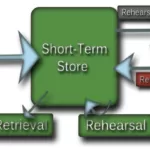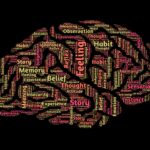Introduction:
Memory is a fundamental aspect of human cognition that allows us to store and retrieve information from past experiences. It plays a crucial role in shaping our identity, facilitating learning, and aiding decision-making processes. Understanding the mechanisms behind memory encoding, storage, and retrieval is essential for enhancing our cognitive abilities and improving our overall quality of life. In this blog post, we will explore the intricacies of memory, including the multistore model, levels of processing, mnemonic techniques, theories of forgetting, metamemory, and types of amnesia.
Memory Encoding and Remembering:
Memory encoding refers to the process of transforming sensory information into a format that can be stored and later retrieved. Our brains have the remarkable ability to encode and remember information through various stages, including sensory memory, short-term memory, and long-term memory.
1. Sensory Memory:
Sensory memory is the initial stage of memory processing where the brain briefly holds raw sensory information from our environment. It includes iconic memory, which pertains to visual information, and echoic memory, which relates to auditory information. Sensory memory has a limited capacity and a very short duration, typically lasting only a few seconds.
2. Short-Term Memory (STM):
Short-term memory, also known as working memory, is the next stage of memory processing. It has a more substantial capacity than sensory memory and can hold information for a brief period, typically around 15-30 seconds. STM plays a vital role in tasks such as problem-solving, decision-making, and comprehension.
3. Long-Term Memory (LTM):
Long-term memory is the final stage of memory processing, where information that is deemed important and relevant is transferred from STM for long-term storage. LTM has an almost unlimited capacity and can retain information for extended periods, ranging from minutes to a lifetime.
The Multistore Model:
The multistore model of memory, proposed by Atkinson and Shiffrin in 1968, provides a framework for understanding the flow of information through the memory system. According to this model, information enters the sensory memory, then transfers to the short-term memory, and finally consolidates into the long-term memory.
Levels of Processing:
Levels of processing theory, developed by Craik and Lockhart in 1972, suggests that the depth of processing affects how well we remember information. Shallow processing involves processing information based on its superficial characteristics, such as its appearance or sound. In contrast, deep processing involves encoding information semantically, focusing on its meaning and connecting it to existing knowledge. Research has consistently shown that deep processing leads to better memory retention compared to shallow processing.
Organization and Mnemonic Techniques to Improve Memory:
Organizing information in a structured manner can enhance memory encoding and retrieval. Techniques such as chunking, which involves grouping information into meaningful clusters, and elaborative rehearsal, where new information is linked to existing knowledge, can significantly improve memory performance.
Mnemonic techniques are memory aids that facilitate the encoding and retrieval of information. These techniques include acronyms, visualization, method of loci (memory palace), and the pegword method. Mnemonic devices provide mental hooks or associations that make it easier to remember and recall information when needed.
Theories of Forgetting:
Forgetting refers to the inability to retrieve previously stored information. Several theories attempt to explain the mechanisms of forgetting, including:
1. Decay Theory: According to this theory, forgetting occurs due to the fading or decay of memory traces over time when they are not used or reinforced.
2. Interference Theory: Interference theory suggests that forgetting happens when similar or competing memories interfere with the retrieval of the target memory. Proactive interference occurs when previously learned information interferes with the recall of newly learned information, while retroactive interference occurs when newly learned information disrupts the retrieval of previously learned information.
3. Retrieval Failure Theory: This theory posits that forgetting is primarily a failure of retrieval rather than the loss of stored information. Retrieval cues, such as contextual cues or cues provided during learning, play a crucial role in facilitating memory retrieval.
Metamemory:
Metamemory refers to our awareness and knowledge of our own memory processes. It involves monitoring and controlling memory processes, such as knowing when and how to deploy specific memory strategies, estimating memory accuracy, and evaluating the effectiveness of various encoding and retrieval techniques.
Amnesia: Anterograde and Retrograde:
Amnesia is a condition characterized by the partial or complete loss of memory. Anterograde amnesia refers to the inability to form new memories after the onset of amnesia, while retrograde amnesia involves the loss of memories formed before the onset of amnesia. Amnesia can be caused by various factors, including brain injury, stroke, certain diseases, or psychological trauma.
Conclusion:
Memory is a complex and fascinating cognitive process that shapes our perception of the world and our sense of self. Understanding how memories are encoded, stored, and retrieved can empower us to optimize our learning, enhance our cognitive abilities, and improve our overall quality of life. By leveraging mnemonic techniques, organizing information effectively, and applying knowledge about memory processes, we can boost our memory performance and preserve valuable memories for a lifetime.







